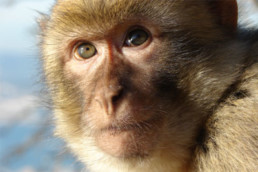The Possible History of Color Vision
Researchers at the University of Calgary recently published a paper theorizing about why certain primate species developed color vision. Among the reasons presented in their analysis was that howler monkeys developed trichromatic vision in order to more easily find nutritious food.
Their color vision is in contrast to many of the other monkeys in South and Central America. Primates’ color seeing abilities can vary greatly, even within a single species. The main reason for these differences could be diet. While other monkeys eat insects, howler monkeys feed mainly on fruits and leaves. On certain trees, like Ficus from Costa Rica, newer leaves offer more nutrition and monkeys prefer them. These leaves feature a reddish hue, and in order to differentiate them from the rest, howler monkeys evolved trichromatic vision.
A similar process may have occurred in Asia and Africa, where primates are more likely to eat leaves than insects. But it is important to note that colorblindness has its own advantages. For example, when hunting for camouflaged bugs, color can actually hinder predators, as the color makes it easier for them to blend into the background. Color blind monkeys are more perceptive of patterns and can cut through camouflage to see interruptions in bark patterns or other environments.
So, it seems probable that our trichromatic vision evolved because it was beneficial for gathering food. But our vision is not perfect, even for food, and subtle differences in food coloring can slip past us. Konica Minolta Sensing offers a wide range of color measurement instruments for the food industry, like the CR-400 and CR-410 Chroma Meters.










